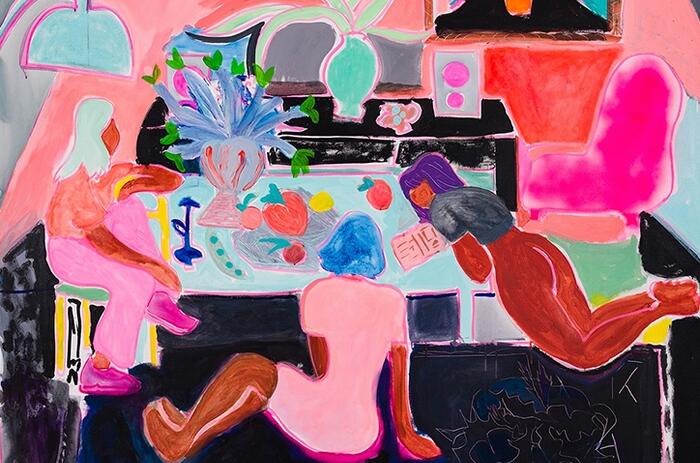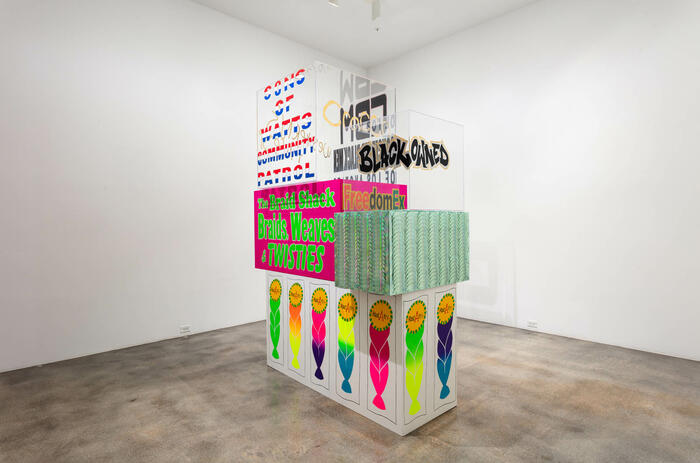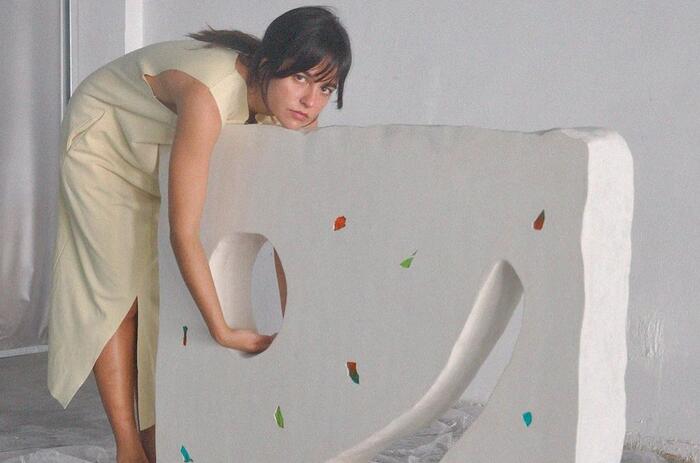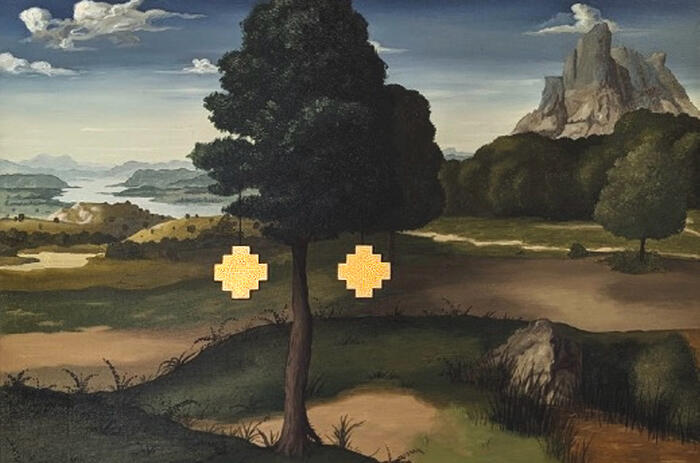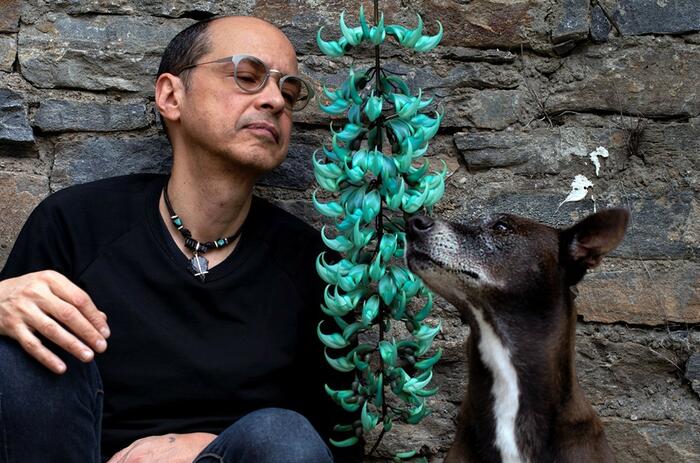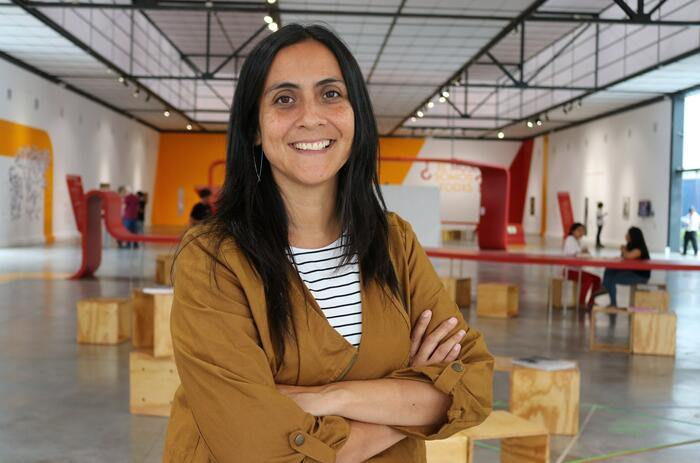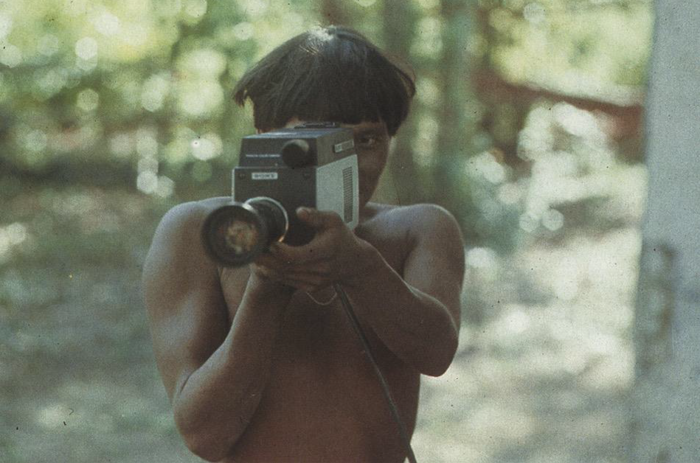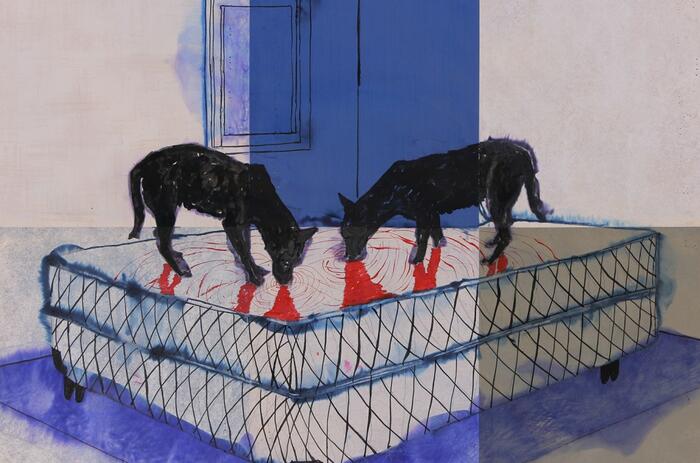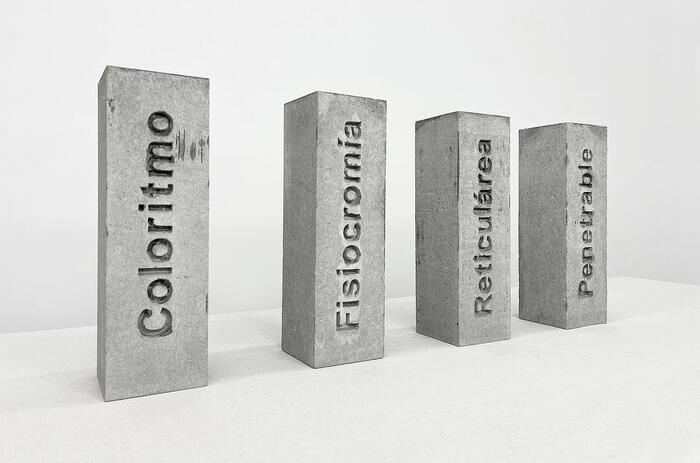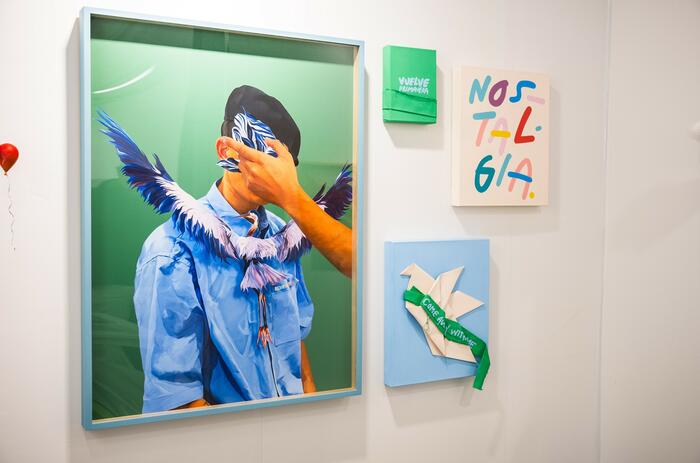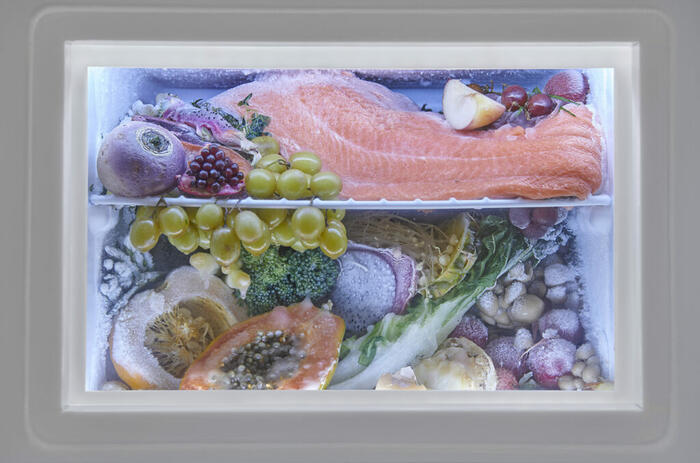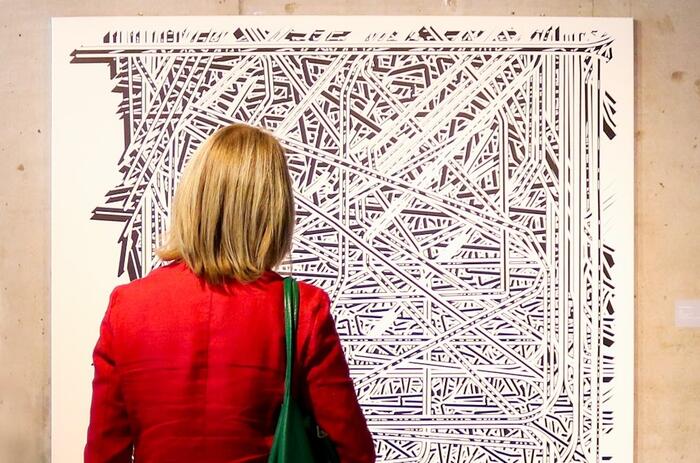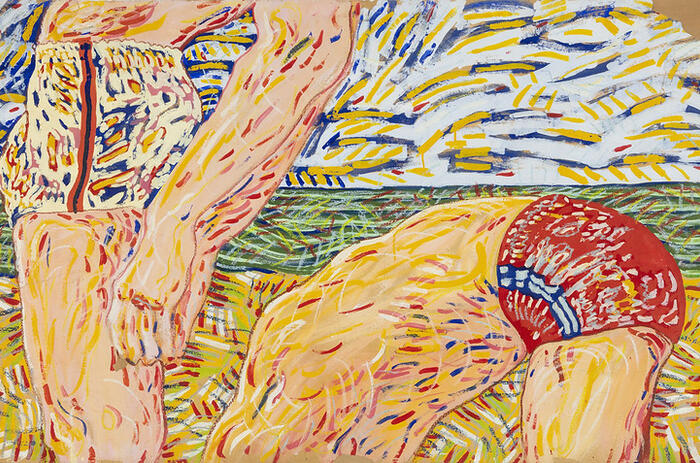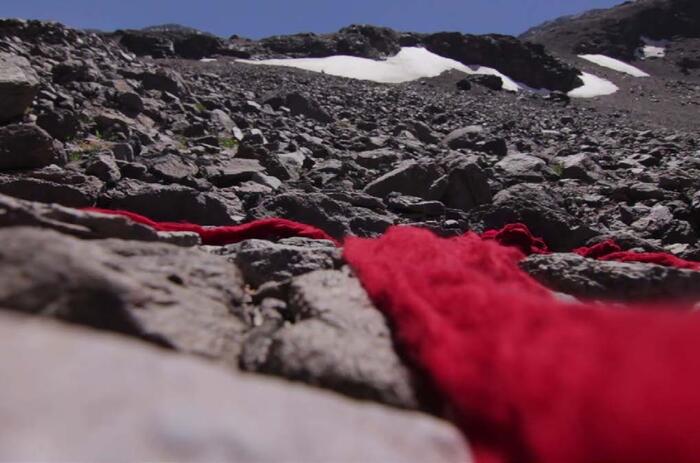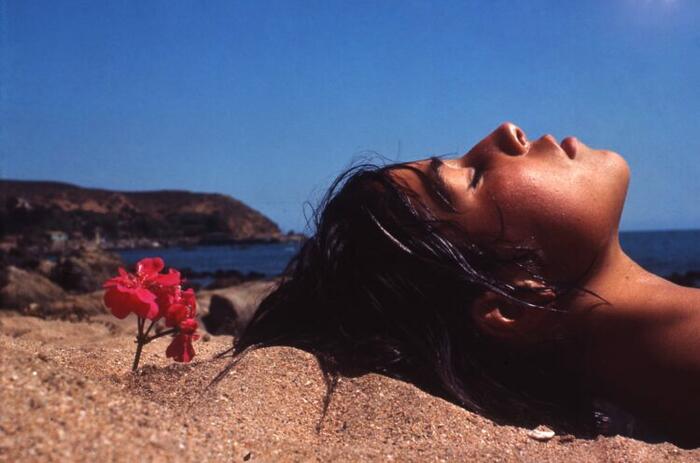POST-HUMANISM AND COLLABORATION. AN INTERVIEW WITH TRINIDAD METZ BREA
Argentine artist Trinidad Metz Brea is part of the 2023 edition of Pinta Miami, within the NEXT section that presents emerging artists from Latin America. In an interview with Arte al Día, she explores the contradictions and challenges of our present and how this is the seedbed for her sculptures, murals and post-human figures.
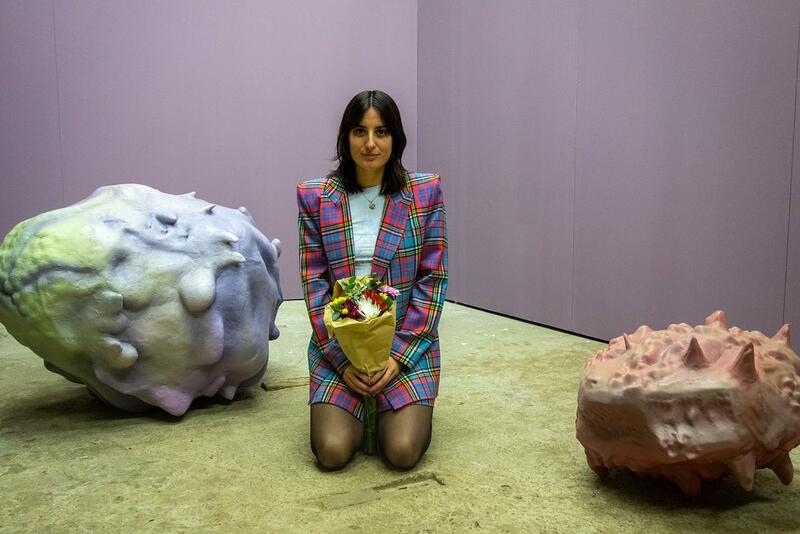
Your work highlights the relationship between technologies and codes in different times and communities. How do you explore that relationship? What do you think about the role of technology in contemporary artistic creation?
Personally, I am interested in taking traditional crafts or techniques and translating or crossing them with new technologies, which is evident in the bronzes and murals (pieces I brought for PINTA Miami). Just as I investigate the hybridization between the technological and the traditional, I do so with several categories that are often perceived as separate spheres, making their boundaries more fluid. Showing that binomials such as virtual and physical, organic/synthetic, f/m (Female/Male), animal/human, tradition or craft/innovation not only coexist, but dialogue, sticking more to the idea of spectrum, permeable categories that allow thinking post-gender and post-human systems.
Digitization and hyperconnectivity is a reflection of our time. The world of 3D and the possibilities it allows are innovative when it comes to generating digital or physical works and also as a method of planning or schematizing a spatiality. In the last 10 years 3D modeling, scanning and printing technologies have become more accessible and user friendly, which opens up many possibilities in various fields including art. And it is something that is constantly evolving, both machinery and materials; it is a field in full bloom. Empowered by the fact that the community of people in the 3D universe of various disciplines is generous in pursuit of collective advancement, it is a community that is not jealous of their knowledge and the tools at their disposal. Perhaps at first, as with any novelty, the use of these technologies was conceptually focused on metalanguage. Today the use of technology is much more integrated and increasingly present, the technological aspect is part of what we are dealing with, but not the central conceptual axis. In the same way, there is a very linking and cyborg part with technology at the time of printing, something relational and sensitive. These issues remain as an open question as to what the entities of the future will engender in terms of v.r. (Virtual Reality), a.i. (Artificial Intelligence) and robotics. But that is another subject.
What do you feel that are the main starting points when thinking about your work and your artistic practice?
It's different depending on the work, which varies a lot because the materialities I work with also vary a lot. But it usually starts with an idea, concept or image and expands from there. I usually go through several instances of drawing and sketching, back and forth until I reach a final form, and even in the process it can mutate. I find that biology and the natural world are great triggers for me, the forms found in nature and the linkages that occur.
You managed KIDZ, an LGBTIQ+ artistic and self-managed collective. How did this experience influence your individual artistic practice? How do you approach collaboration and self-management in the artistic field?
In collective practices, of which I participated in several projects, there is something very beautiful and nourishing, where the participants contribute something singular that is strengthened in the totality. I find myself returning in search of that in the individual, I am interested in the transdisciplinary and the generation of these crossings: in texts, music, performance, readings and parallel narrative structures that give meaning to different realities and ways of perceiving the world.
This also allows me to work with people from other fields that I deeply admire and that although we speak other languages, we address the same issues. This is what happens to me with Nube, an incredible performer with whom we are putting together a performance for my current exhibition and with whom I have already worked. Our interests converge in cyborgs, in technodigitalization and post-humanism and that is something that is enhanced together. It also happens with Lila Tirando a Violeta (composer and sound artist), with whom I am working for the second time and who composed a track for the exhibition, which condenses this universe of sounds of nature, water, critters, machines, expanding and adding another layer of meaning to the universe. Or with Sofía Dourron (curator of my current solo show in Buenos Aires, Argentina) who with her text added another layer of meaning to the show, generating a "desire path" in the narrative of the show.
In most of your works a portal seems to open to a world that mixes past, present and future... this exploration of different temporalities happening at the same time, is it consciously or unconsciously shaped?
It is conscious, but at the same time organic and intuitive. It allows us to talk about the cyclicality of time while we can imagine other possible futures. The fantasy or fiction of alternative destinies, where wit and tenderness are catalysts. I think about when we are no longer here, what will be left, what will be the monuments of our civilization. And conceptually I also think of the works in this way, they are somehow fables in which ideas of ecophilia are presented, ways of collective survival that present an alternative to coextinction in the anthropocene.
I draw from many sources, from gender theory, posthumanism, feminism, anti-speciesism, colonialism, aesthetics, science fiction, art history, nature and scientific studies, as well as the images and interests I inhabit. Generating a reference bank, or rather a living and mutant archive. To then articulate and give body to a mythology of my own, in dialogue with authors such as Paul B. Preciado, Judith Butler, Rosi Braidotti, Severo Sarduy, Liliana Viola, among others.
Since I was a child, I was exposed to the world of biology, botany, and in contact with animals. I spent my vacations in Córdoba with my grandparents, surrounded by all kinds of creatures, from dogs, rabbits, chickens, fish, birds, vizcachas. Also, I have as reference the native plants, the vegetable garden and the compost from my summers in the house that my grandfather, an eccentric and half doomsday prepper, called his "functional unit of life".
From anime, manga and online games I am attracted by the images as much as by the stories and problems they raise, there is something very human about these stories that allows us to empathize with the characters beyond good/bad, there are nuances, a complexity is presented in a much more real sense and usually has life lessons linked to contemporary issues. There is a vision of a future that is sometimes hopeful, even if chaotic or post-apocalyptic. I take references from this universe as well as from ancient history and mythologies, medieval imaginary, bestiaries and illuminated books where deformity sprouts. I believe that the idea of reading Art History as a great archive, alive and mutable, allows us to appropriate these data in search of new interpretations. From this point of view, I work with the images: taking these references, the techniques and crafts of the visual tradition, and then translating them into other keys. In addition, crossed by a technological use and a contemporary language in line with posthumanism that accounts for this.
There is a search for the representation of family memories and everyday narratives. How do these themes influence your work and what is their importance to you?
I think I like the idea of playing to build worlds, worlds that are more than human, hybrid, non-binary and queer. That at the same time can reflect something of our reality or current issues. The monstrosity is a portal, it is the potentiality of a social/natural re-assembly, in which there are no hierarchies. The works are kind of monuments of a post-human civilization that oscillates between the end of the world, a more dystopian fantasy of cohabitation, and different forms of survival through adaptability, where ingenuity and tenderness are put as a catalyst. Taking from the concept of symbiogenesis proposed by Lynn Margulis.
The local and global daily context crosses us as individuals and as artists. We are facing a paradigm shift that has transformed the context of perception in general and in the visual arts in particular, both for artists and their audiences. This panorama presents a challenge, the aesthetic-artistic productions are now inserted in a hyperdatified environment which imposes a different logic of production and reception. I believe that, consequently, there is a rethinking of the human bond and of certain habits.
In this edition of Pinta Miami 2023 you are part of the NEXT section (emerging artists), is there any specific pursuit in your proposal? How do you think it dialogues with Julieta Prato's and Cindy Ramirez's work?
I brought several pieces to the fair, among them a mural, low and high relief, modeled and printed in 3D and bronzes that are a kind of posthuman icons, which dialogue strongly with a visual tradition.
In general, with the murals I am interested in the viewer being able to remain immersed in the work, finding all the situations that occur in the scene, these references and quotations. I see this as very much in line with Cindy's research. I believe that in both Cindy's and Julieta's work there is an operation of retaking, appropriating and translating a history and diverse temporalities, connecting from our contemporaneity and its material possibilities and languages.

